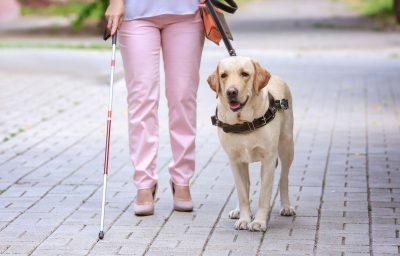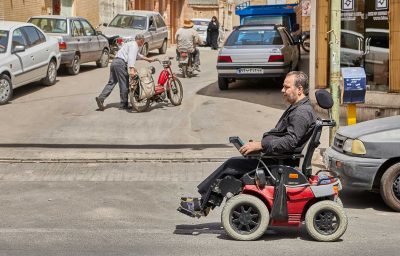
The creation of a semi-autonomous wheelchair, called RoboEye, could be a game changer for people with severe motor disabilities. The wheelchair is operated by users’ eye movements, giving independence to people who are unable to use their limbs.
RoboEYE was designed by Alessandro Luchetti and Luca Maule in collaboration with the MIRo lab, a research team within Italy’s University of Trento’s Industrial Engineering Department, and was demonstrated at the Rehacare trade fair in 2018.
“Our aim was to design an innovative, cost-effective and user-friendly control system based on gaze detection for a power wheelchair to allow users with any severe motor disability to move easily and autonomously within their homes,” said Luchetti and Maule.
The eye-movement-controlled wheelchair merges the functionalities of mobile robotic systems into a standard power wheelchair. When navigating their surroundings, users of the wheelchair can choose between two different driving strategies – one based on eye movements and the other based on pointing to a desired destination.
“The most intuitive and direct modality foresees the continuous control of frontal and angular wheelchair velocities by gazing at different areas of a monitor,” the researchers said.
“The semi-autonomous modality, on the other hand, allows navigation toward a selected point in the environment by just pointing and activating the wished destination while the system autonomously plans and follows the trajectory that brings the wheelchair to that point.”
Luchetti, Maule and their colleagues analyzed the effectiveness of the wheelchair in numerical simulations and real-world use in which volunteers tested RoboEYE and provided feedback.
The findings were encouraging and spoke enthusiastically of the safety, reliability and efficiency of the unique wheelchair design.
“Compared to other solutions, RoboEYE is minimally invasive to its users, it integrates functionalities derived from the field of mobile robotics, it takes into account the role of uncertainty in human-machine interactions, and it is based on low-cost hardware solutions,” Luchetti and Maule said.
“The result is an efficient and cost-effective system that ensures a user’s safety.”
The researchers state that the dual navigation system could also be applied to other wheelchairs or structures of different shapes and sizes to assist people with severe motor disabilities.








